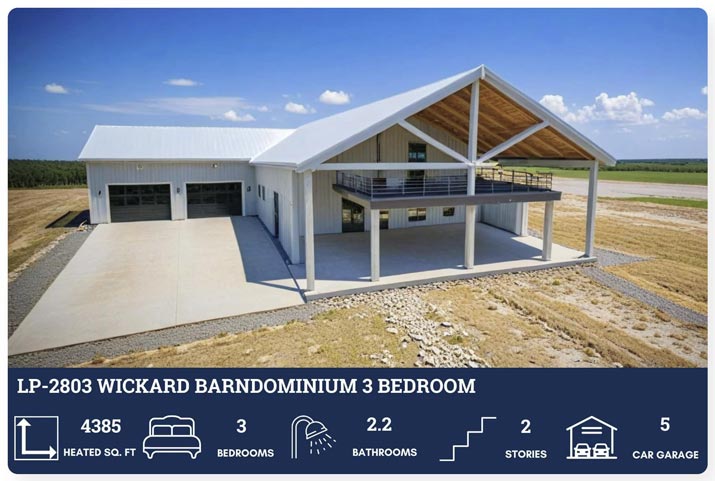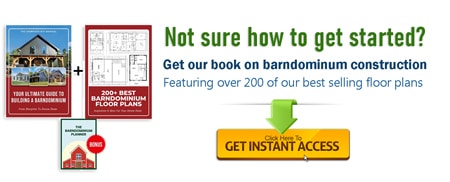What is a Barndominium & How Do I Build One?
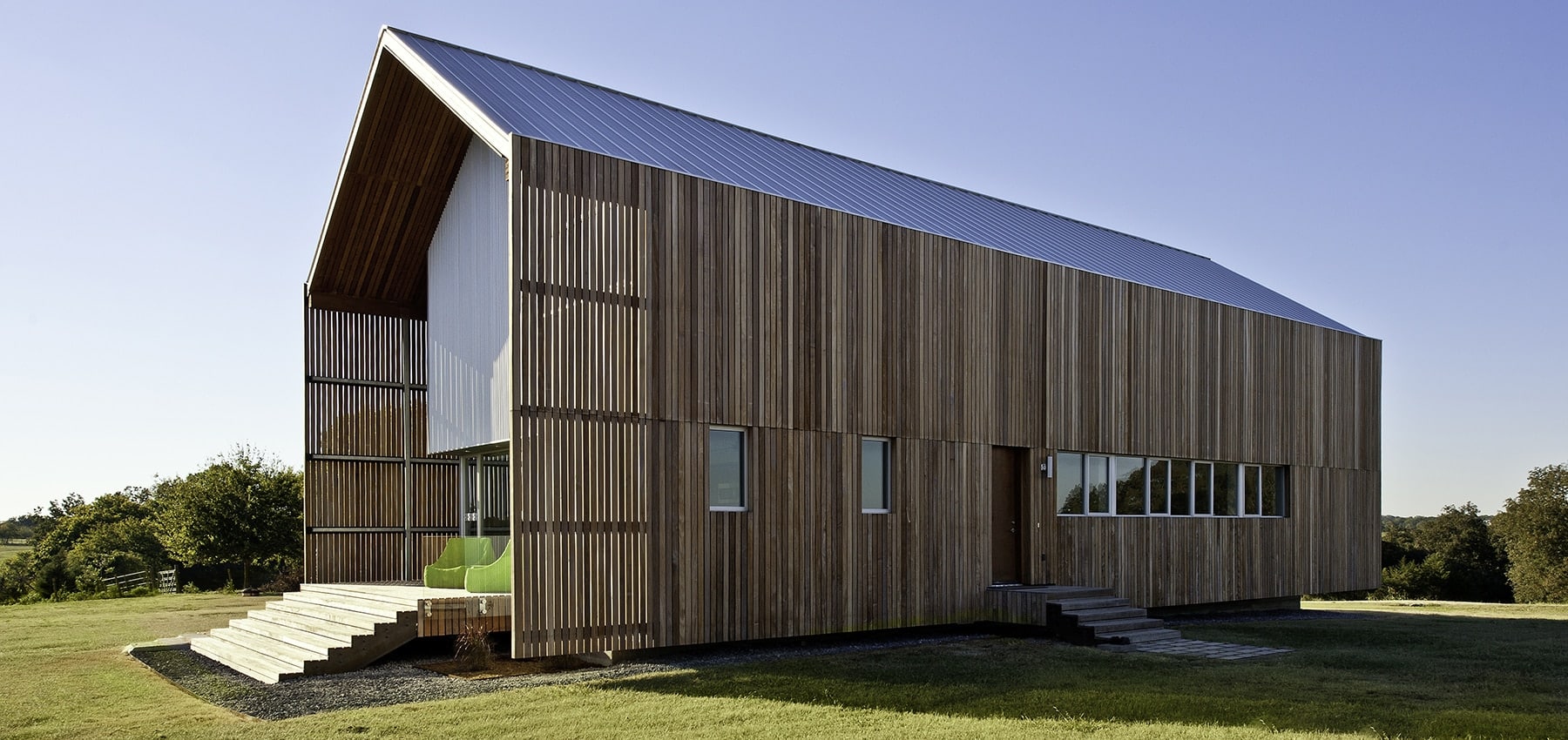
Barndominiums are the single most popular style for metal houses.
If you’re new to the barndo homes trend or just want to learn more about this style of housing, you may be wondering about its benefits, how much they cost, and how easy they are to build.
We’re going to cover all of these details – and a lot more – so that you can decide if a barndo is a good choice for you before you break ground on your new home.
Barndominium 101

Barndominiums are a barn-type aesthetic that combines a rustic charm with modern construction technology. Originally, the term was defined by converting old barns into residential houses.
Most barndos are post-frame structures, which makes them very different from a conventional home.
While they look like traditional barns on the exterior, the majority are metal building structures with custom living space. The interior often looks just like any other open-layout home but that varies with your barn house plans.
Bedrooms and bathrooms offer privacy, but common spaces are open, allowing for greater versatility.
Rather than the 2×4 frames used in stick-built homes, barndominiums have frames made from posts that are driven into the ground. This makes them quicker and easier to construct.
In most cases, barndos are also less expensive than their stick-built counterparts.
Barndominiums are typically built on top of a concrete slab, and this often becomes a feature of the home (although it doesn’t have to be!).
While some owners of barn homes use their structures for agricultural purposes, most do not. The barn design is part of the charm of this home style and a big reason why it’s become so popular with people looking for an alternative to a traditional home.
While they may not always be used for agriculture, barndominiums are commonly used as living/working spaces. Many owners use the “shop” area of the barndo to run their home business. This led to the popular shop house trend.
Barndo Floor Plans For Sale
Common Features & Options For Barndominium Homes
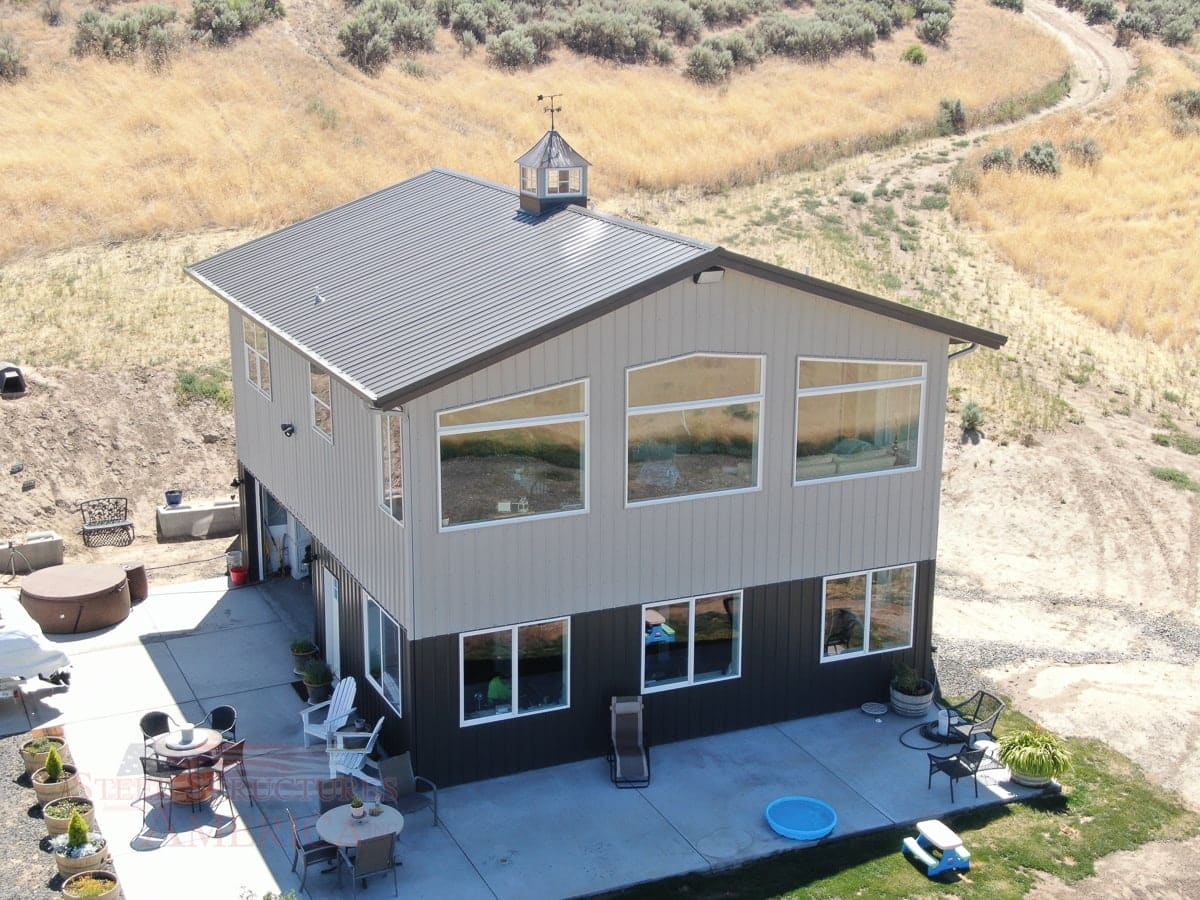
Barn house plans can have a variety of features. Just about anything you could put in a traditional home, you can put in a barndo. The advantage of a barndo floor plan is that the interior is open and free of the constraints of a traditional home.
While it’s not uncommon for these homes to be single-story, some can be up to three stories high.
Some common characteristics and features of these homes include:
- Exposed beams, especially in the living and kitchen areas
- Vaulted ceilings
- Wooden staircases
- Sliding barn doors
- Gabled roofs
- Metal siding and roofing
- Columns
Open living floor plans are standard with barndominiums.
This helps make the home feel more spacious and welcoming.
Who Started The Barn Home Trend?
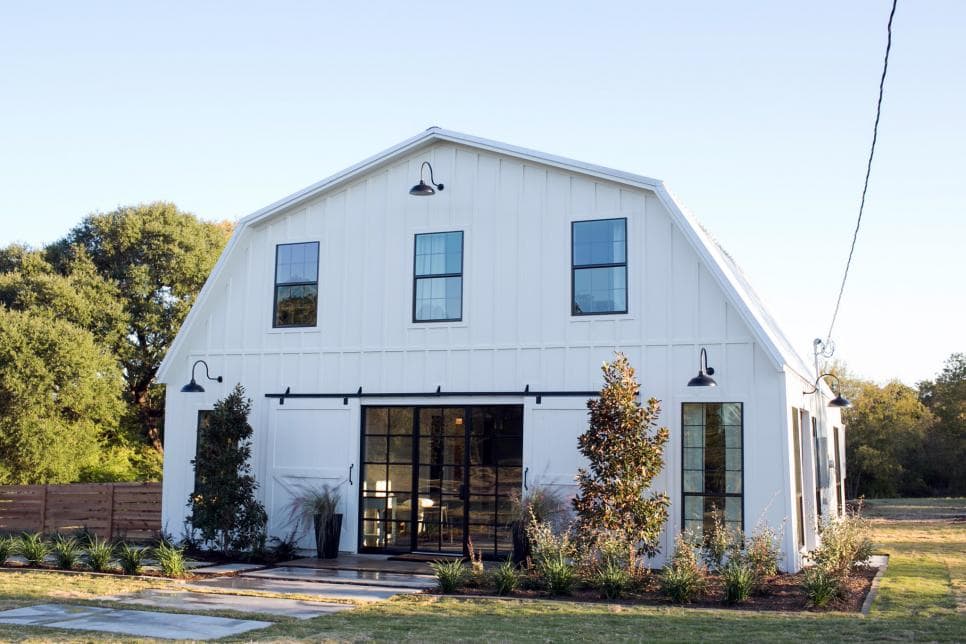
Barndos are nothing new. In rural Texas, it was common for farmers to convert the upper level of a barn into a living space. While they weren’t called barndominiums at the time, they were exactly that: working and living spaces – all under one roof.
The term “barndominium” first came about in the 1980s when realtor Karl Nilsen coined the term. The term referred to a community that was focused on equestrian activities in Connecticut. The building project focused on cost savings and consisted of homes that were built from metal barn shells.
While the concept of a barndo has been around since this time, it wasn’t until 2016 that the trend started to take off. In an episode of the HGTV show Fixer Upper, Chip and Joanna Gaines renovated a barn into a home. It wasn’t long after that everyone wanted a dream barndominium of their own.
Feature Gallery
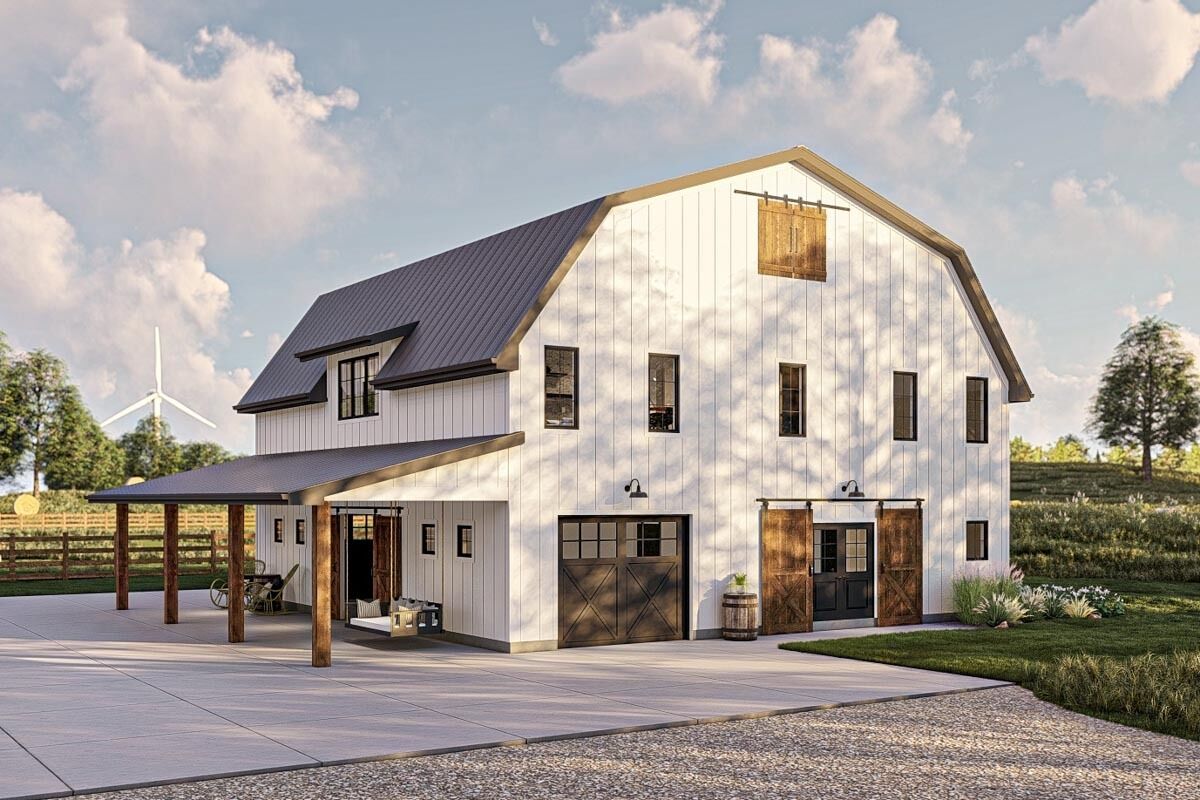
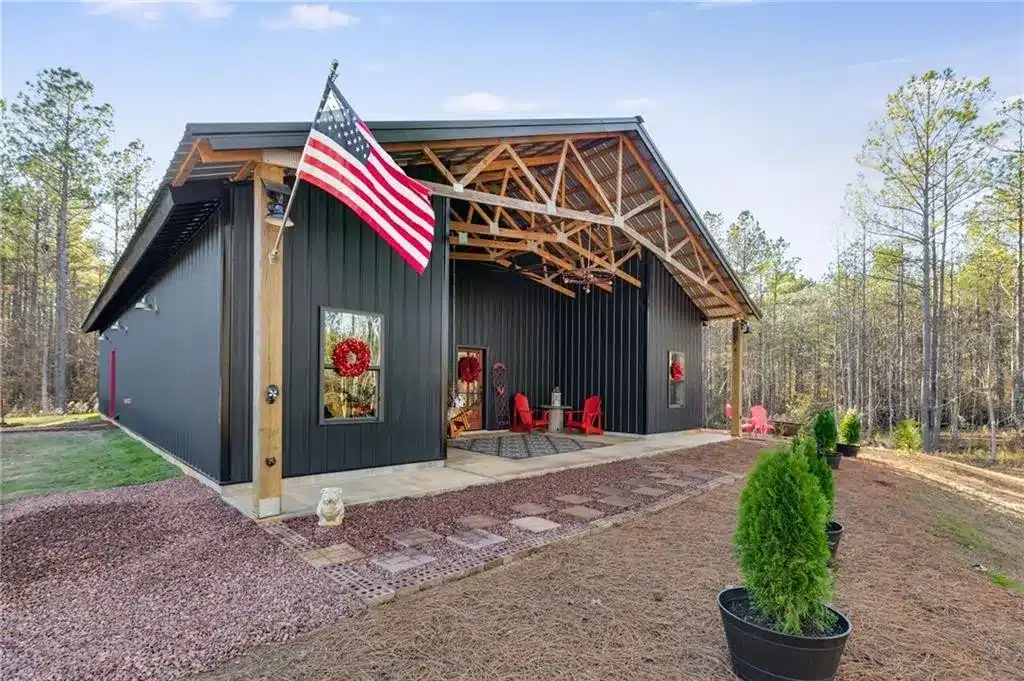
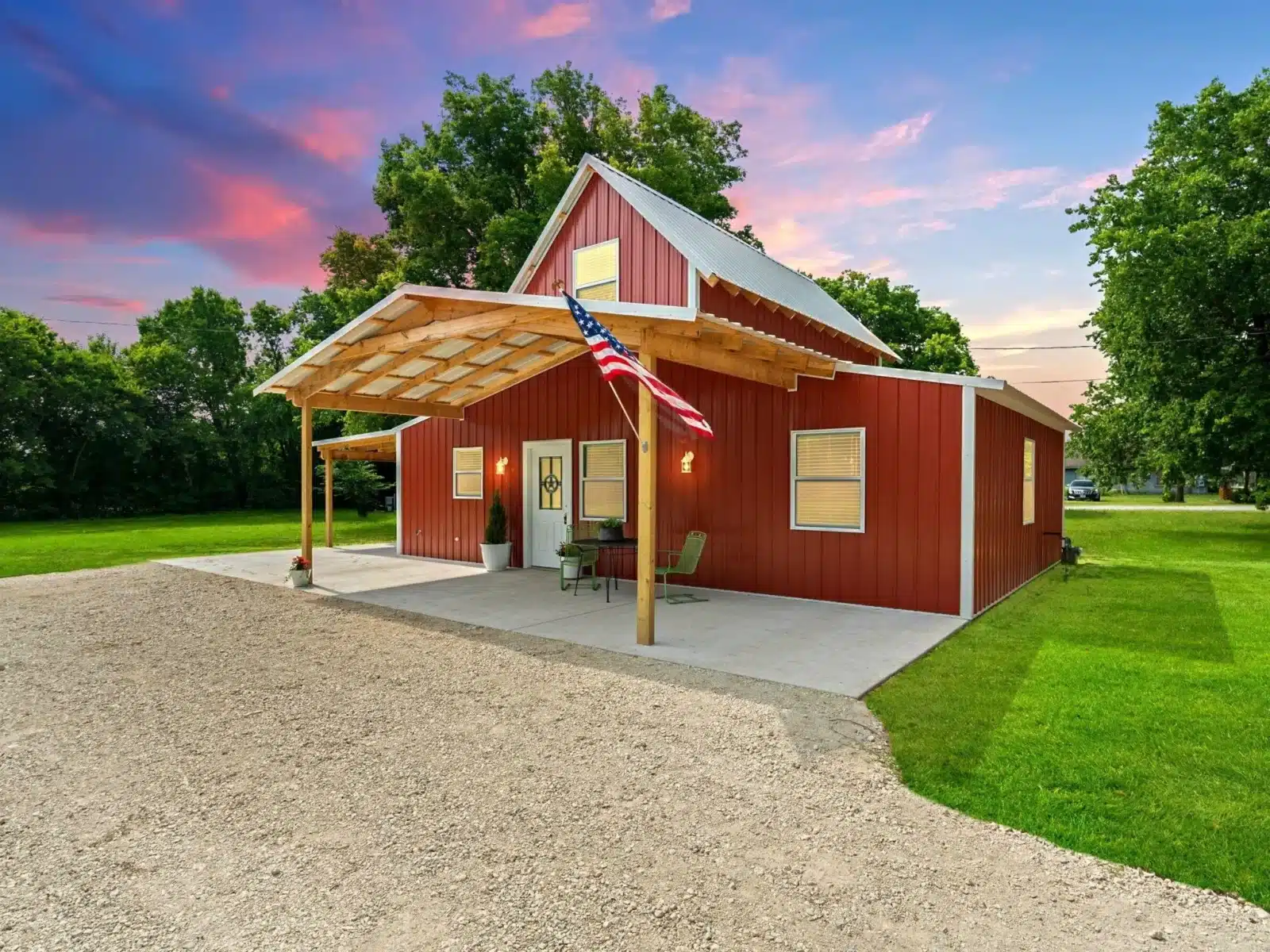
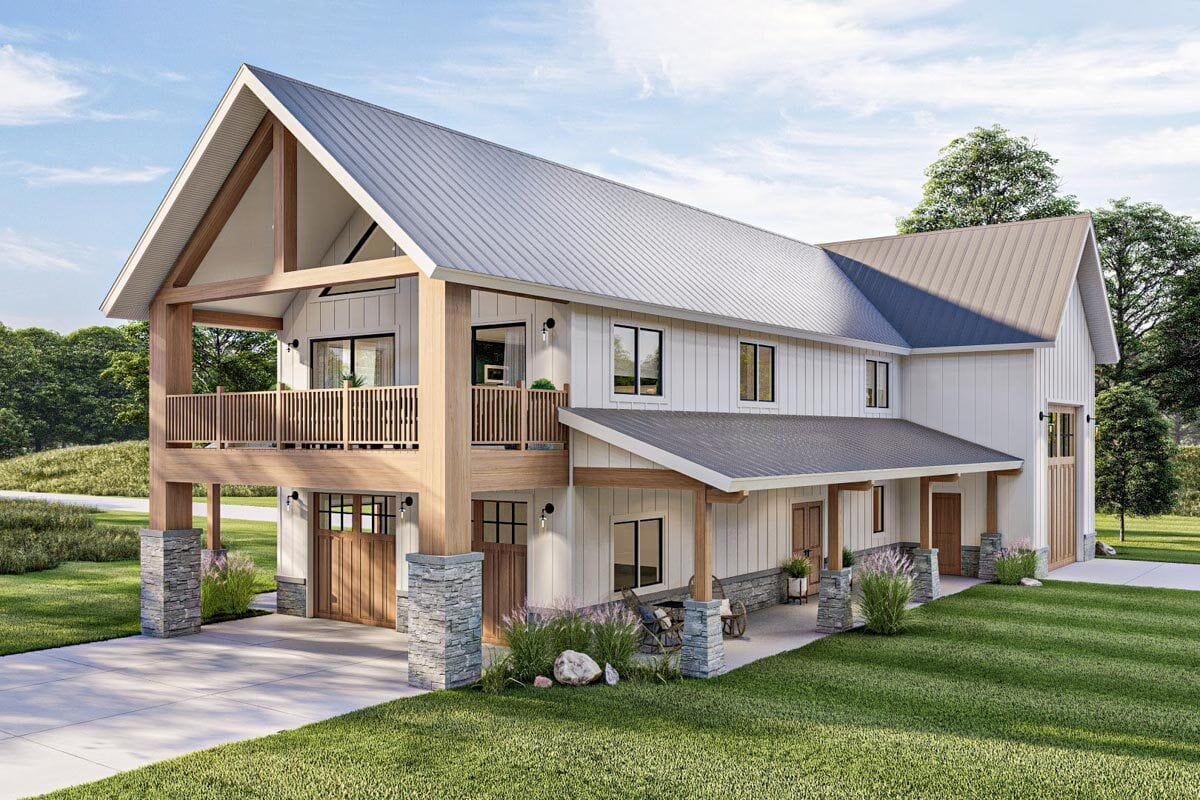

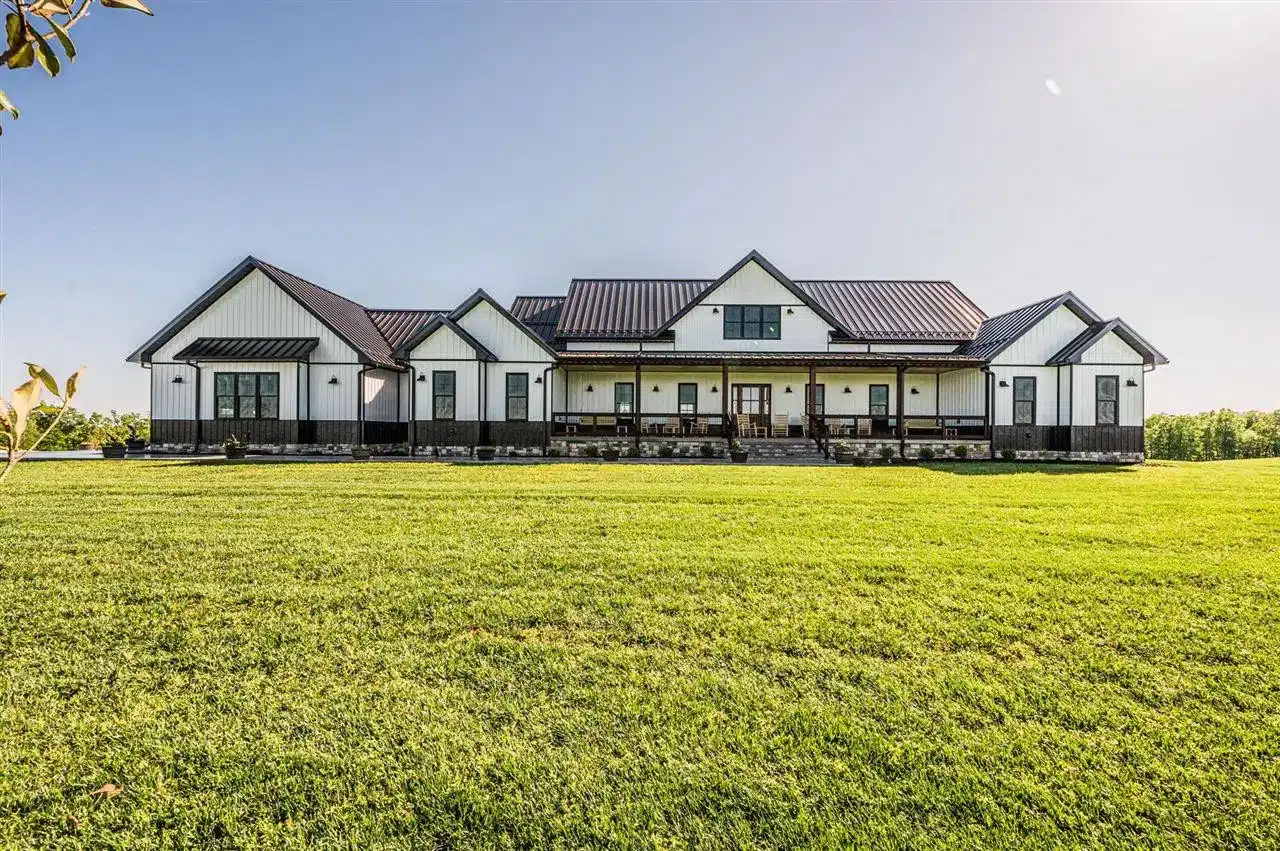
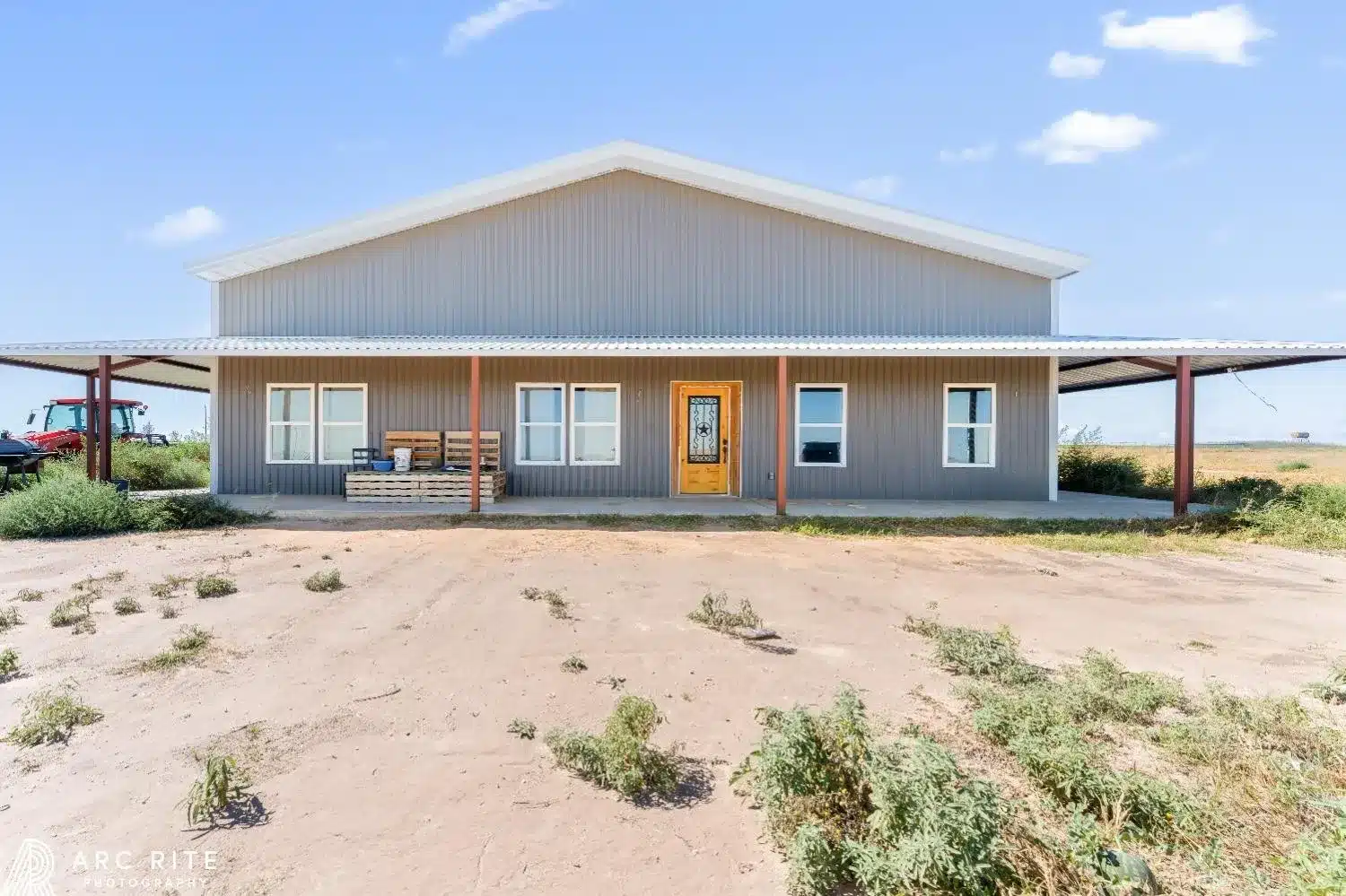


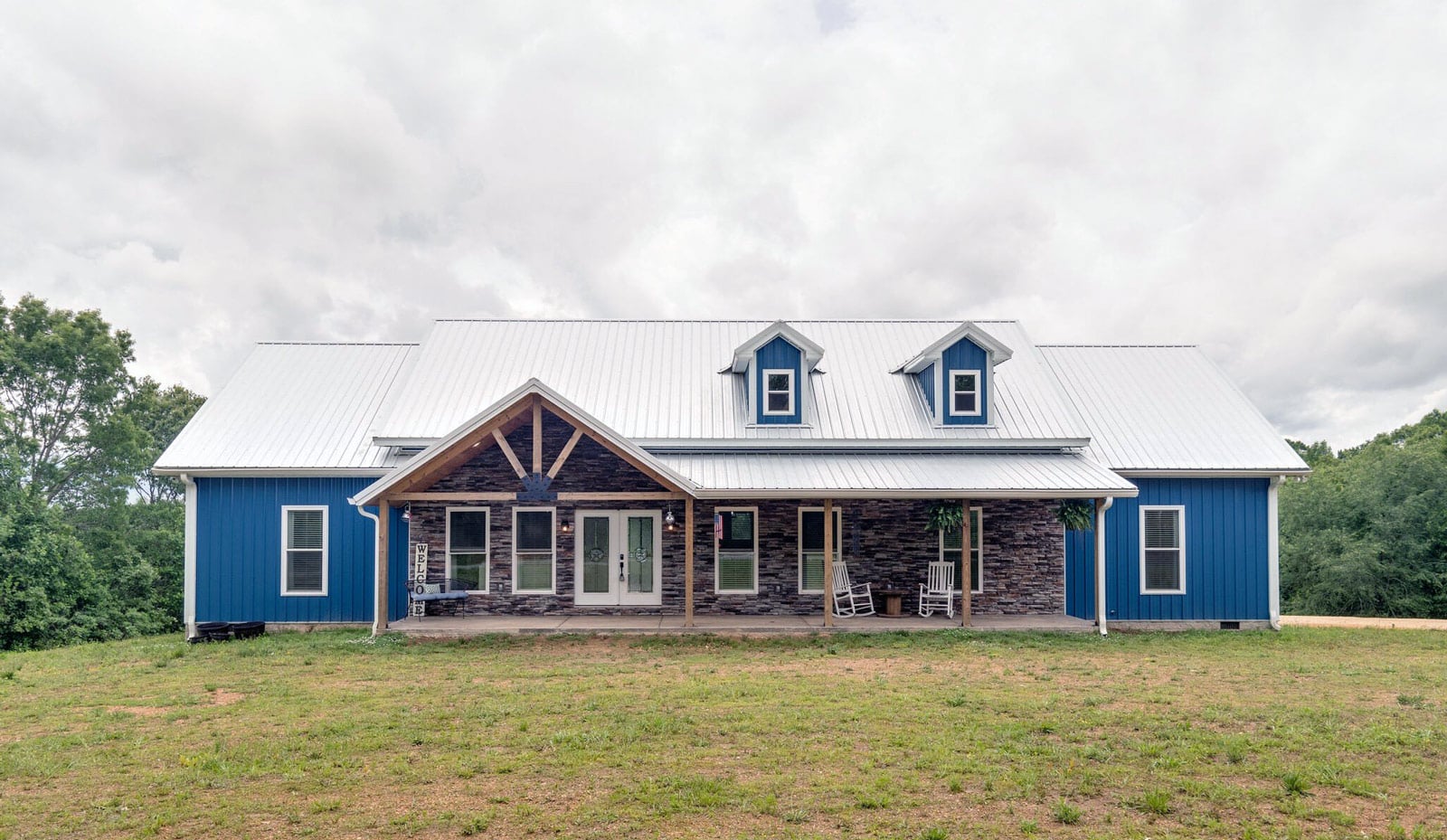
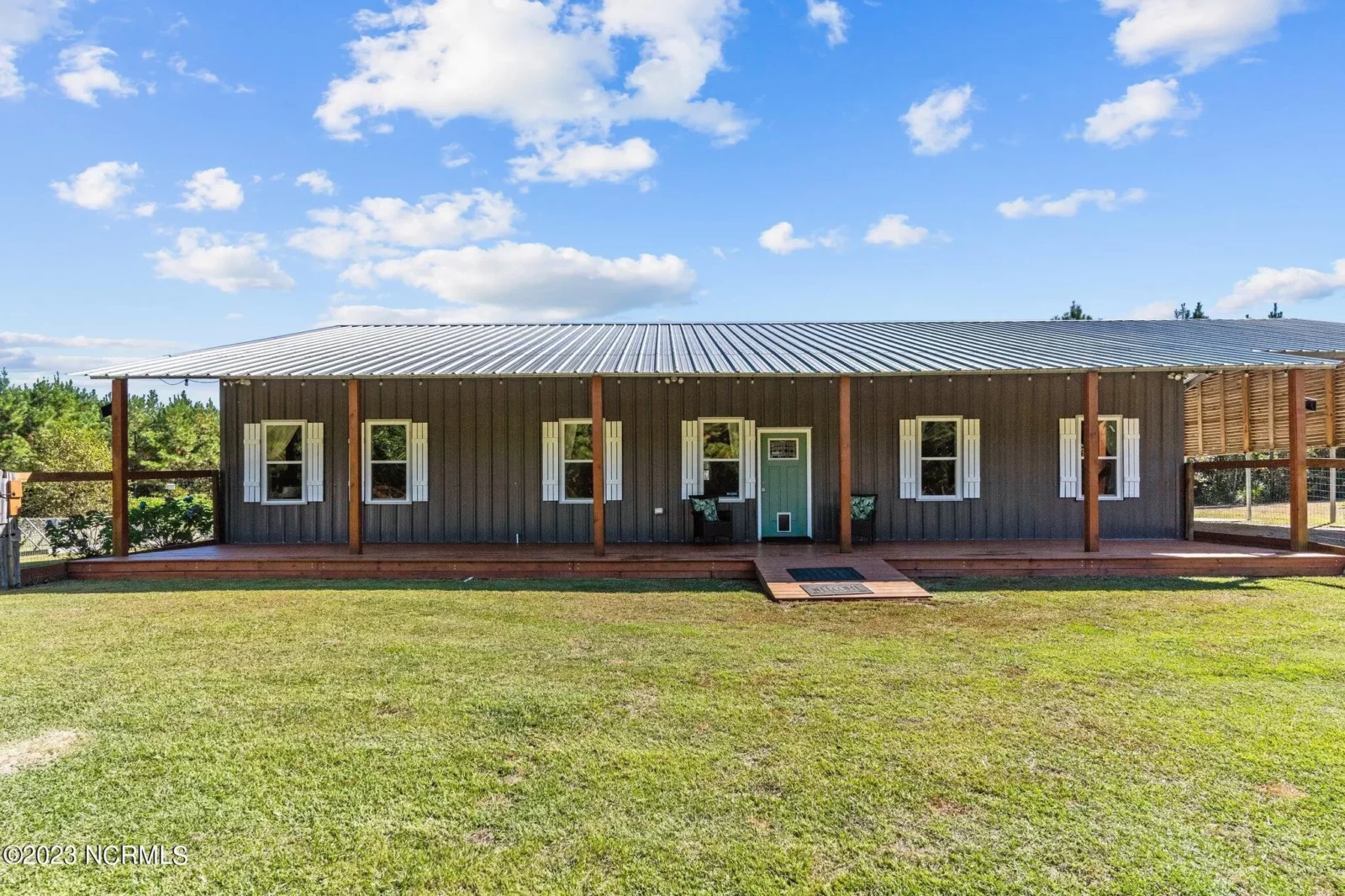

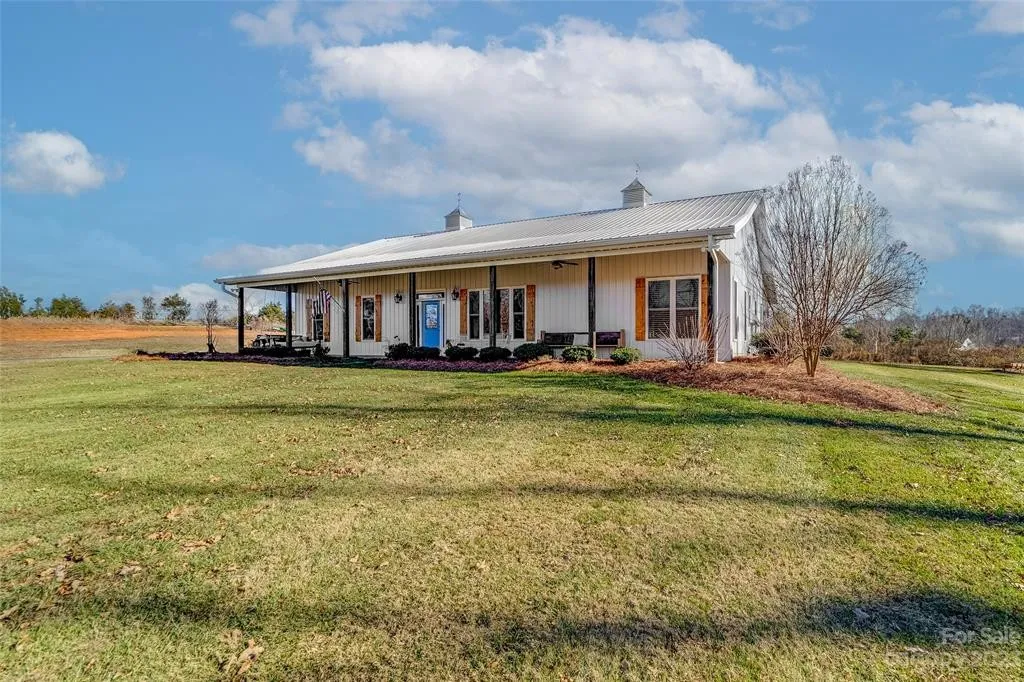
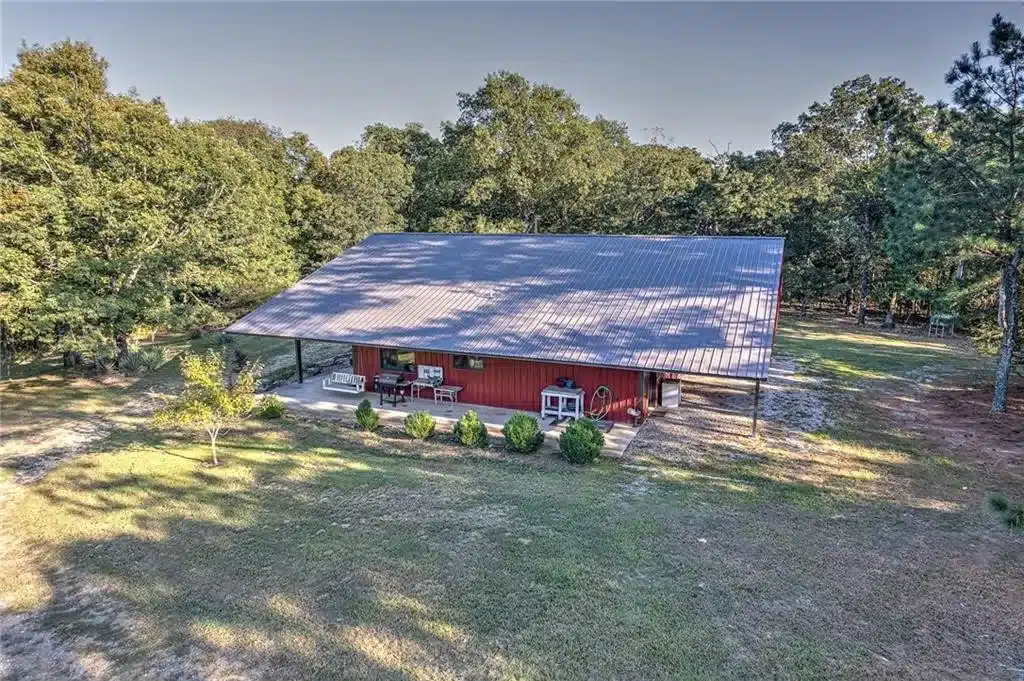

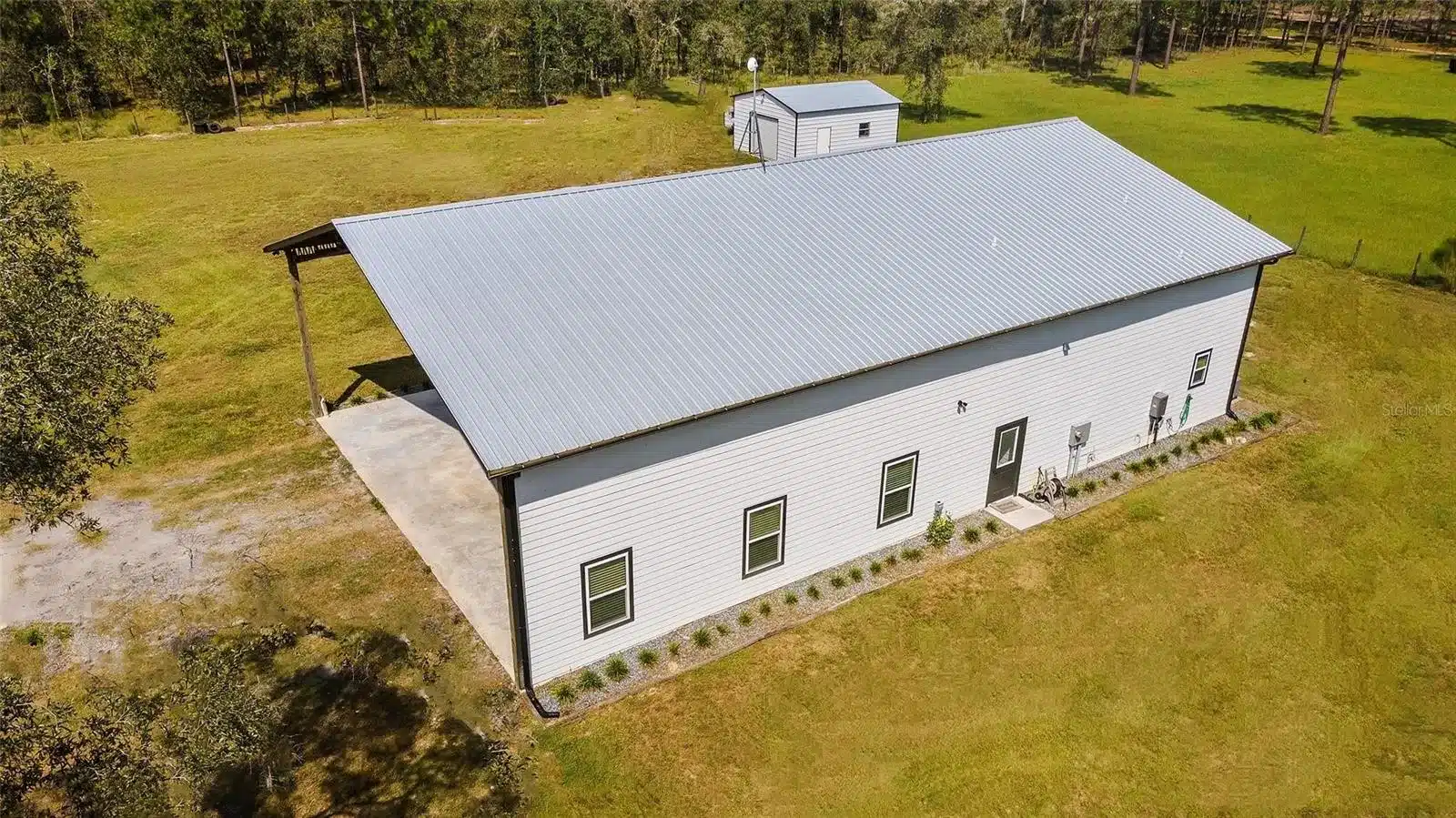
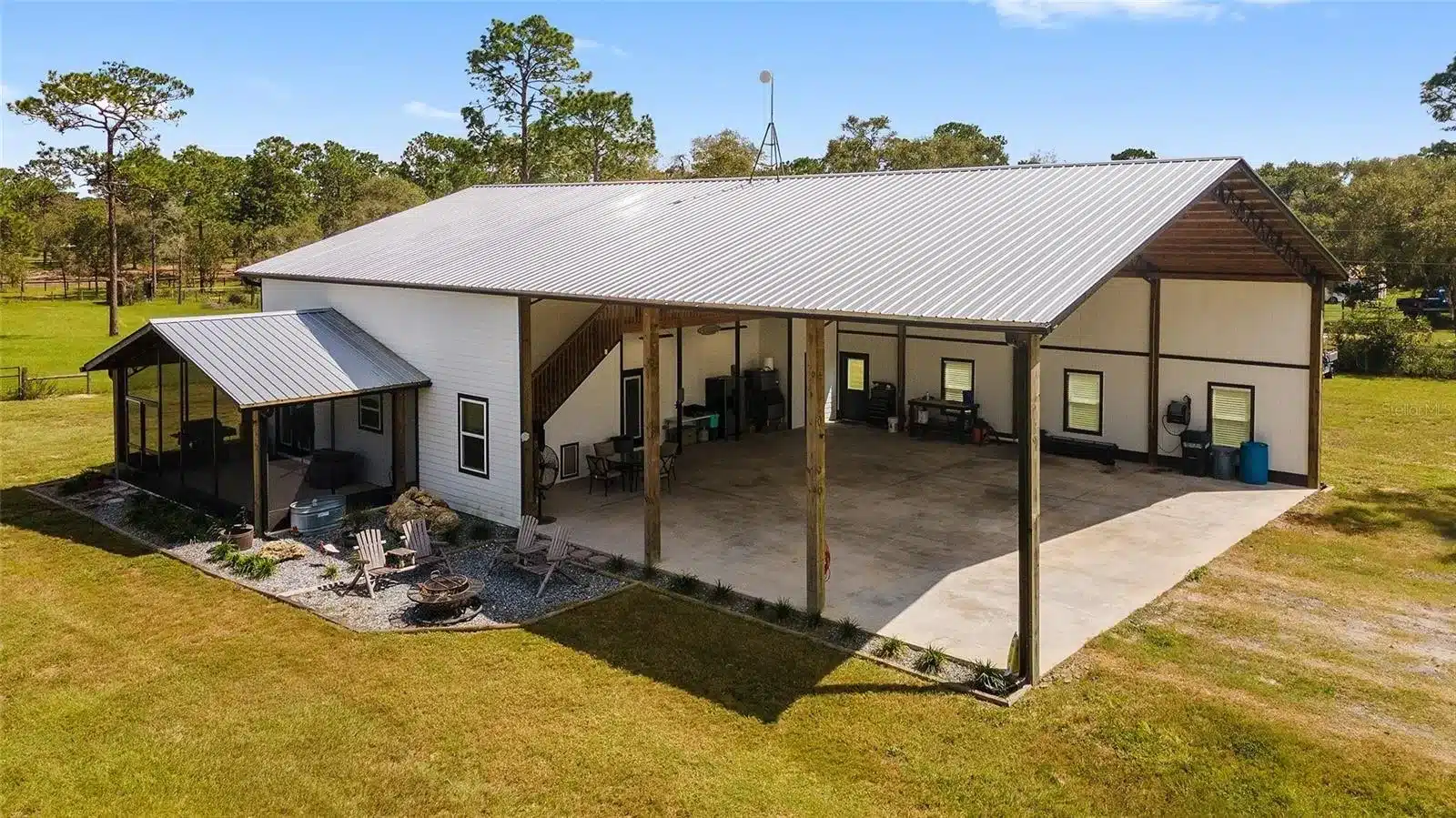
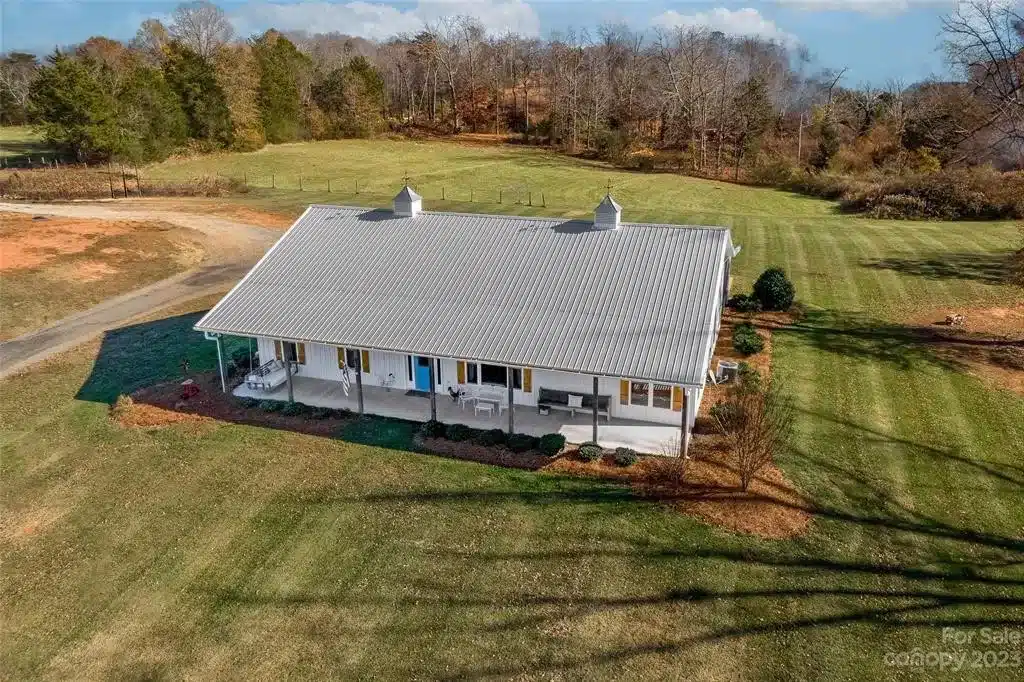
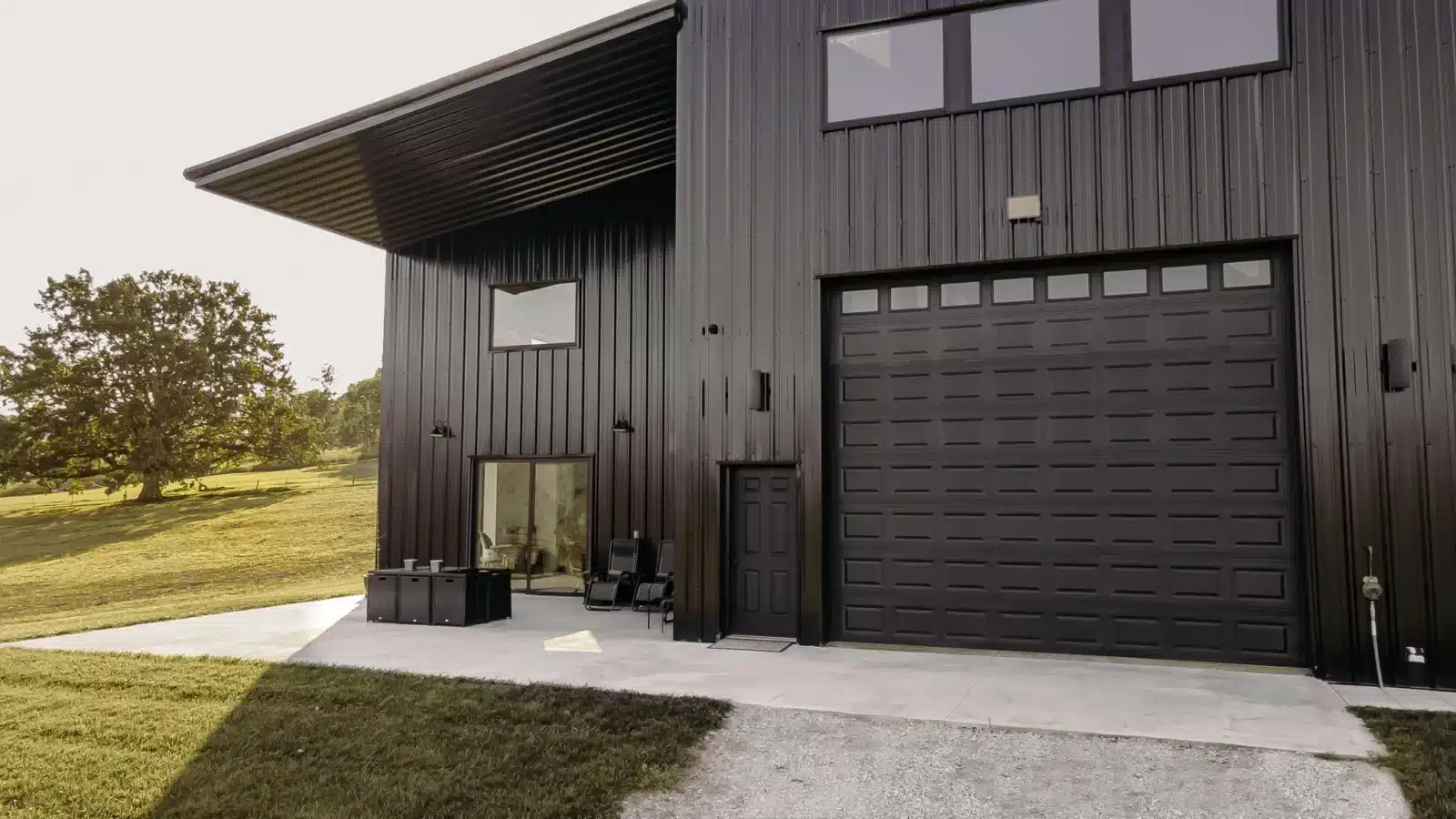
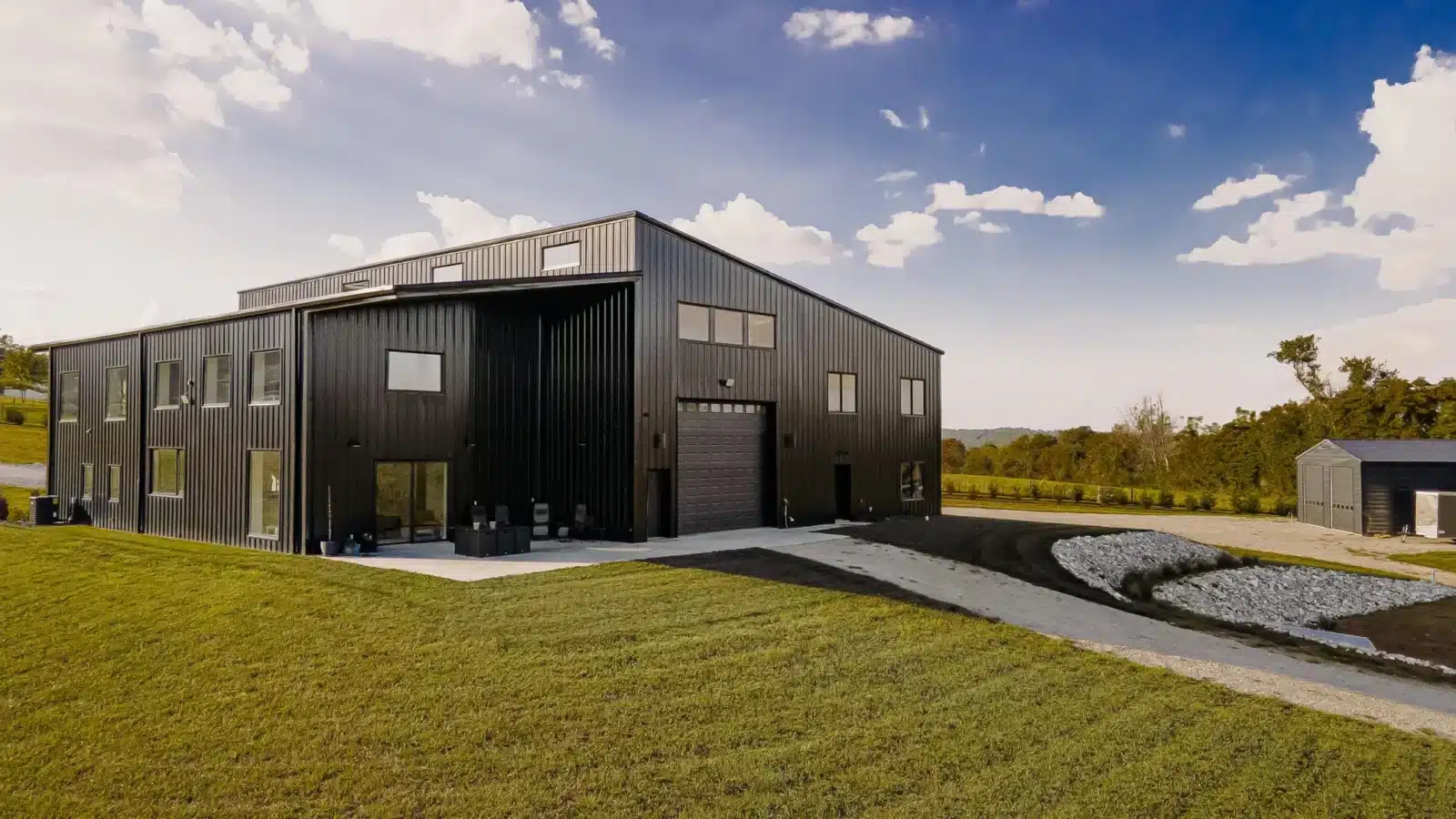
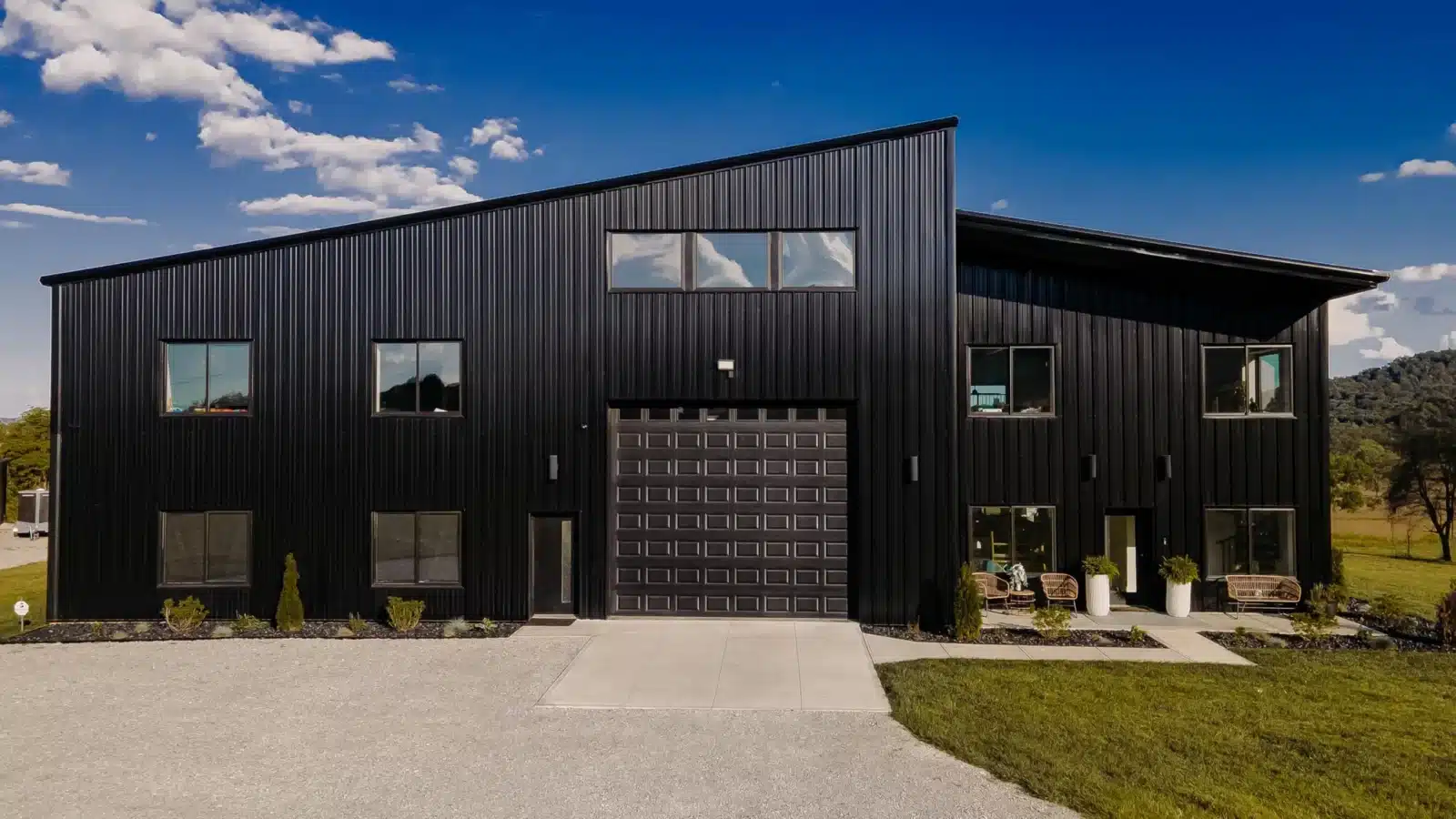
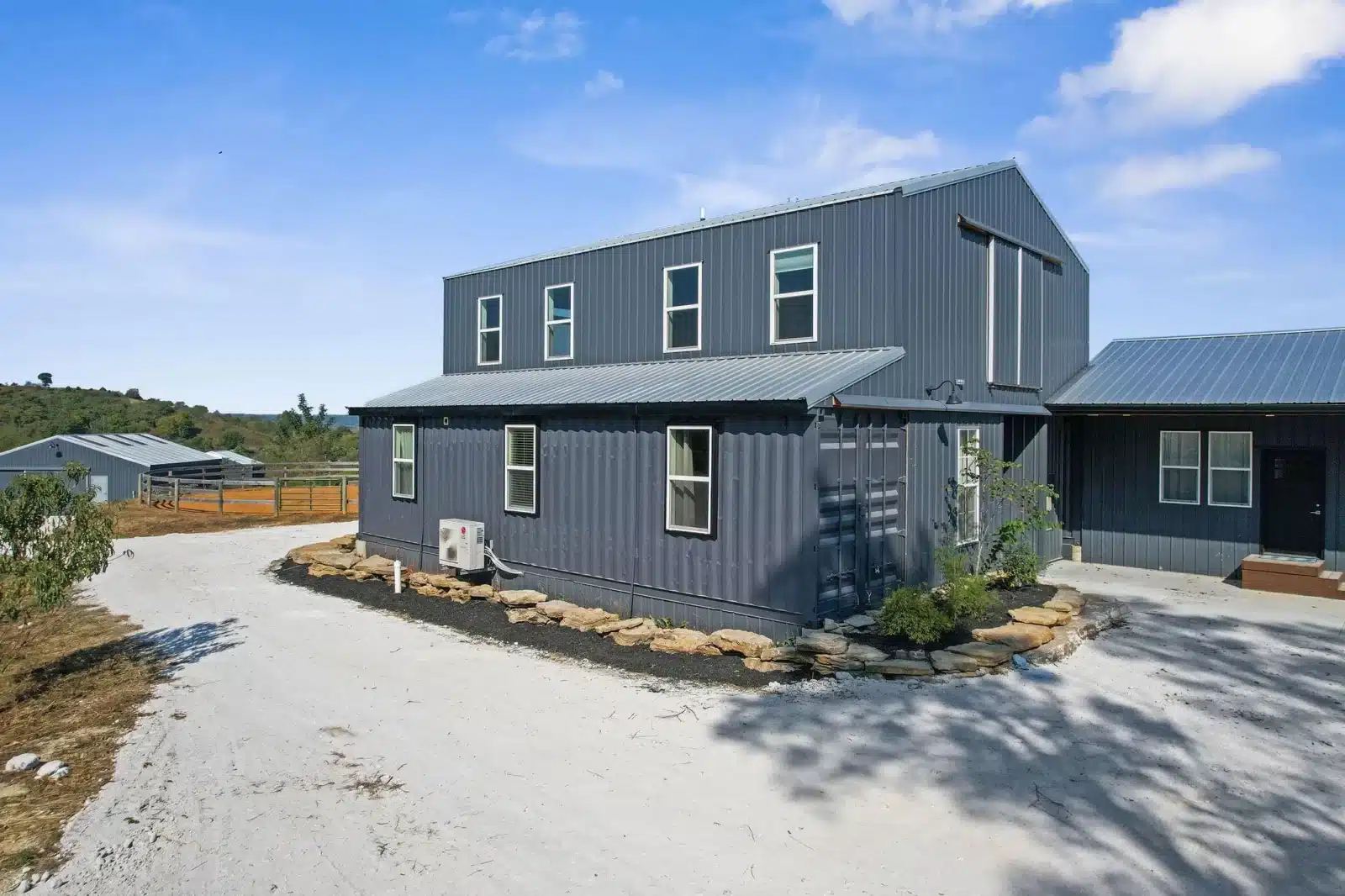
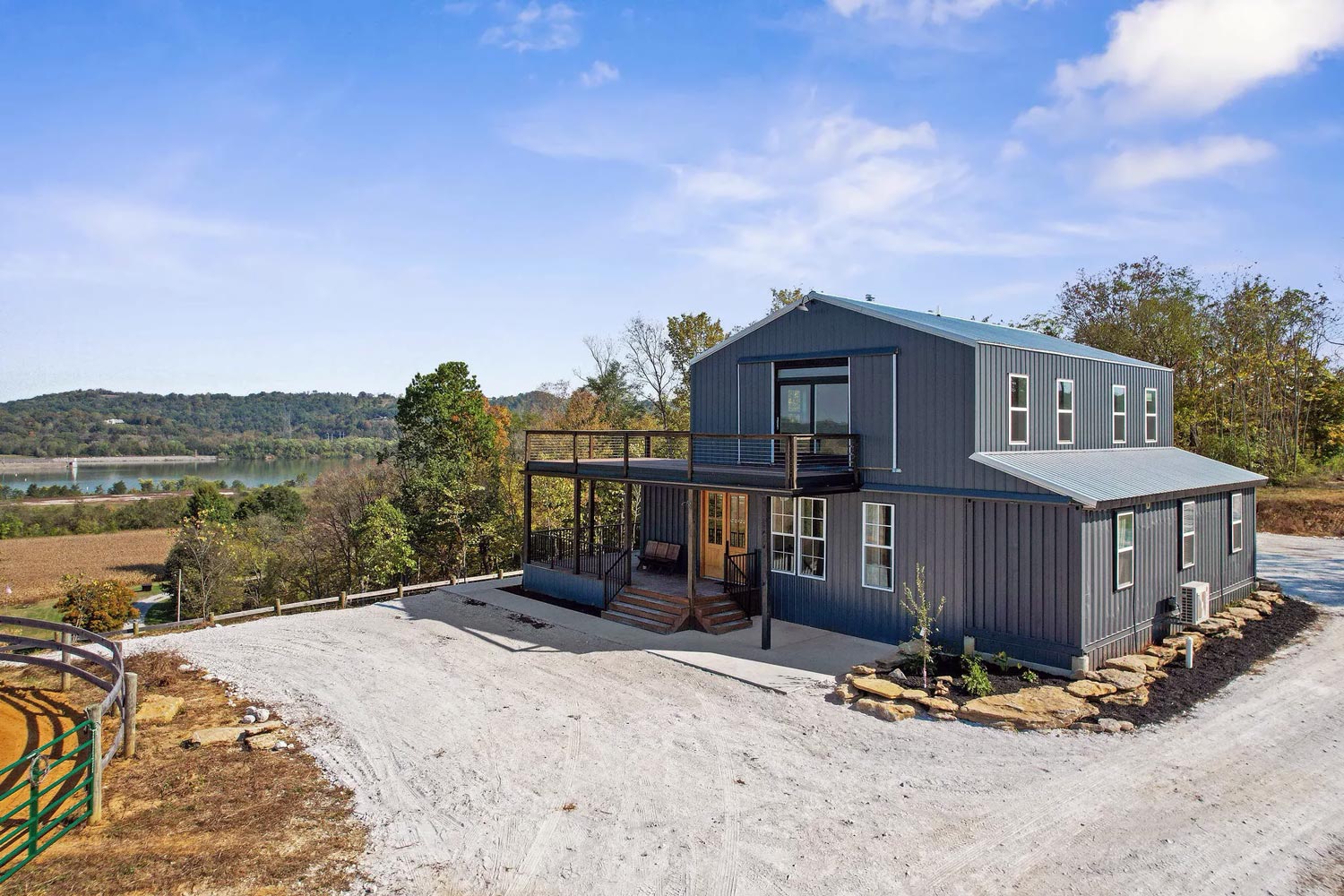
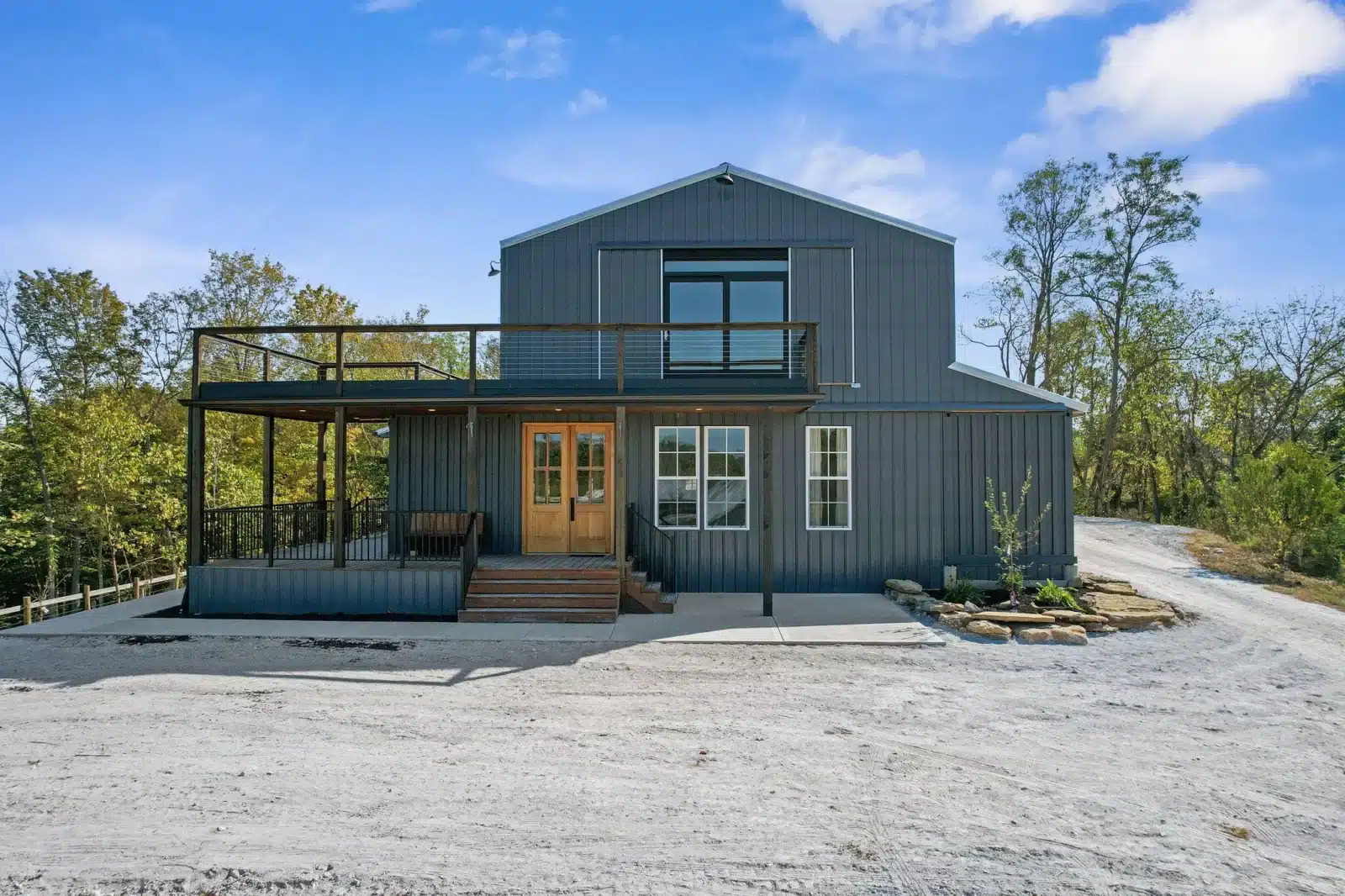

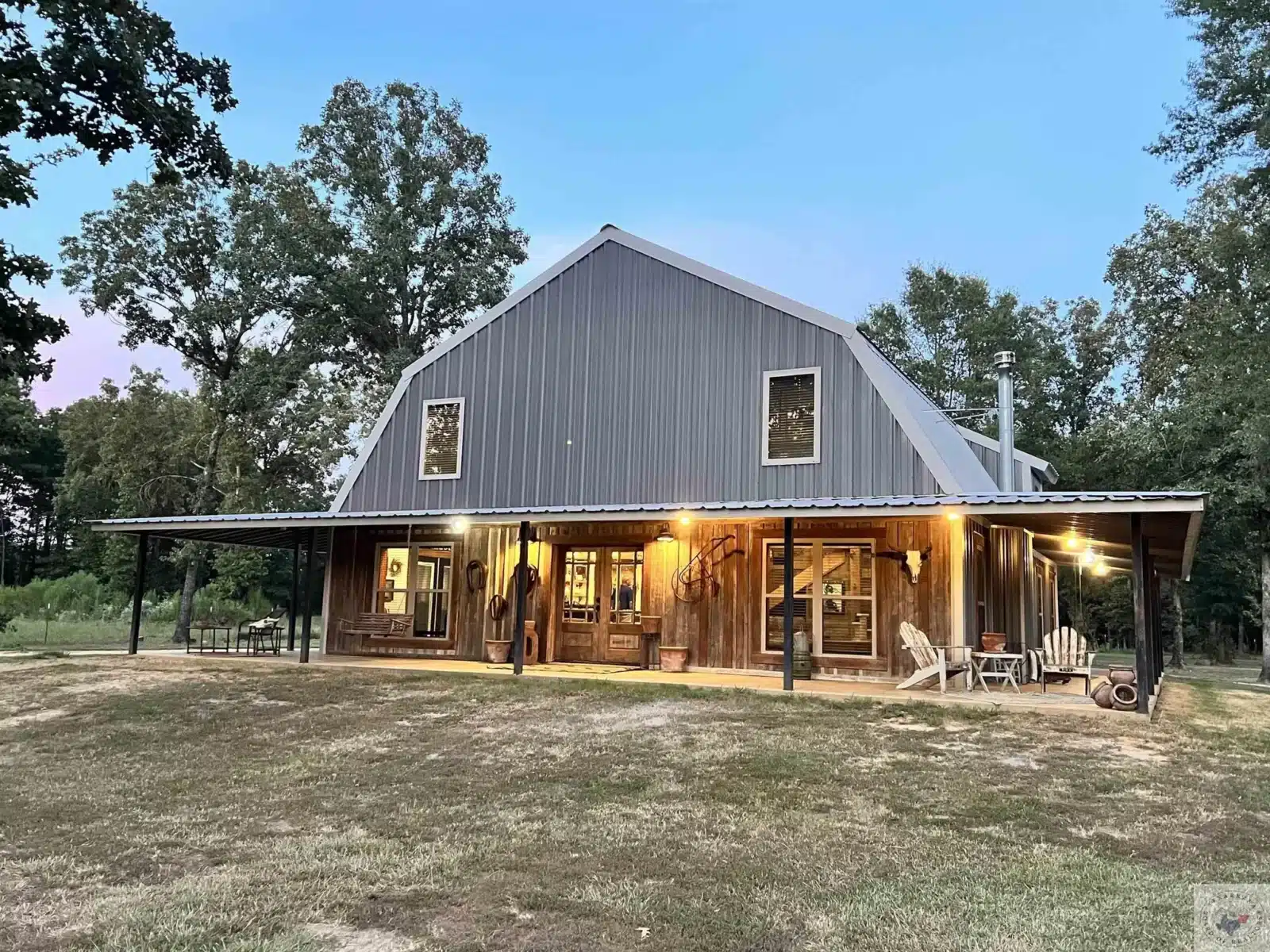
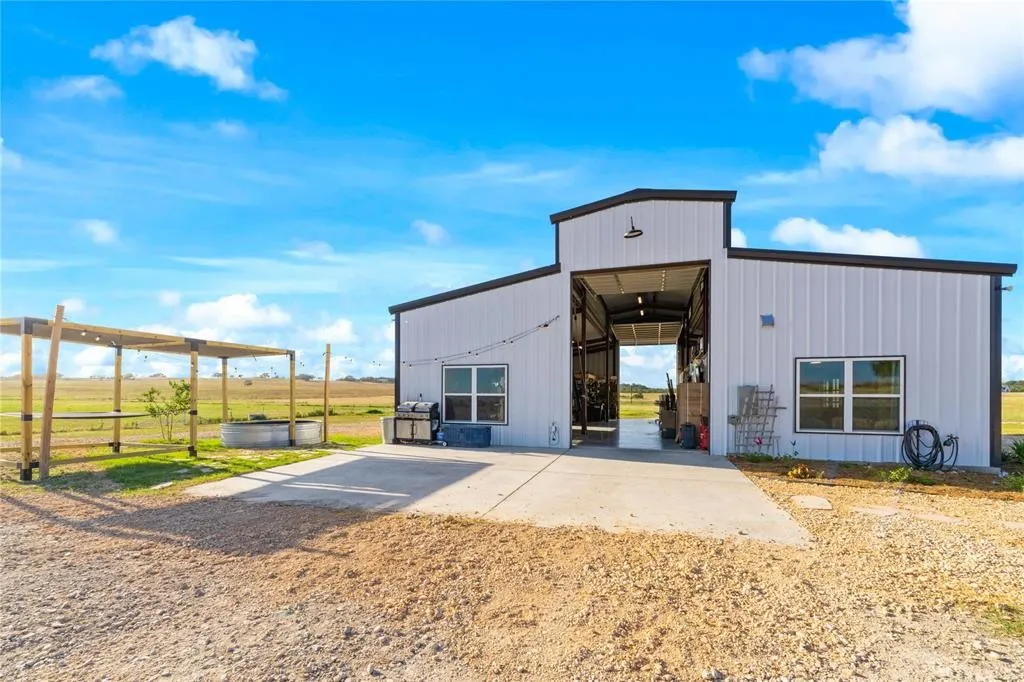
What are the Key Benefits For Homeowners?
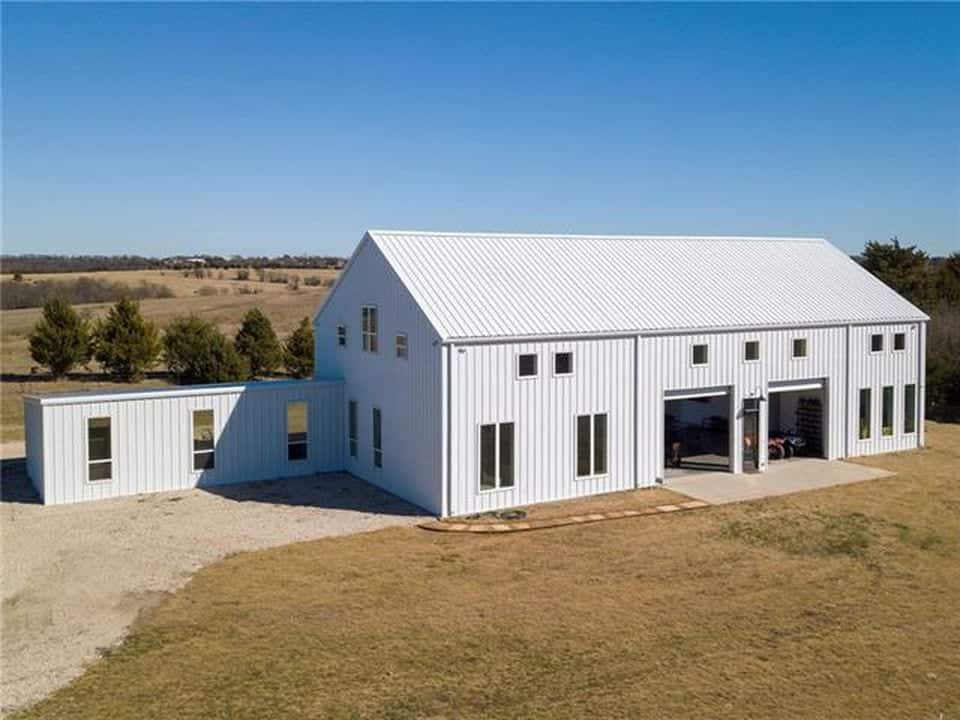
The construction industry is seeing prices soar. The market is almost unsustainable with today’s wages. Material costs are also rising, and a new build today is 18% more expensive than a year ago.
Barndominiums offer an opportunity to build a home that meets the specific requirements of the buyer while being cheaper in the process.
We are seeing more people gravitate towards metal barndominiums as a cost-effective solution in a housing market where construction costs are increasing.
A few of the many benefits of choosing the barndo life over traditional homes include:
- Durability. Whether you buy a barndo kit or have a metal building floor plan erected by a contractor, you can be sure that the building process meets or exceeds local construction codes. Your home benefits from steel being stronger, resistant to rotting, termites, and fire-resistant. When compared to wood, there’s no comparison: steel building materials are far more durable.
- Low maintenance. Steel buildings are low maintenance, and while interior walls, countertops, doors and other materials will need the same maintenance seen in traditional homes, the structure of the home will require less maintenance.
- Faster construction. Barndominium kits are your best bet if you need a building project to move along quickly. A new build is faster because a lot of the components are made off-site and pre-drilled. The contractor will put the shell of the home together much faster and spend the majority of the construction time on the interior of the home. Barn homes, if they’re using a complex floor plan, can go from working on the barndo plans to completion in six months.
- Adaptable design. Steel buildings are more structurally sound, so you don’t need load-bearing walls inside of the space. You can maximize the space of your dream barndo with a wide-open floor plan that has expansive views and opens up space. You’re less restricted with steel buildings than traditional homes, and you can maximize your space per square foot. Build an airplane hangar, horse stalls or even traditional homes with a barndo kit.
- Eco-friendly design. Did you know that steel buildings are more eco-friendly than their wood counterparts? A metal barndominium kit has a lower carbon footprint, reduces material waste and can offer long-term energy savings. In terms of being eco-friendly, steel construction always beats wood. It’s a structure that lasts longer, requires less maintenance and wastes fewer materials.
- Fire-resistant design. The structure of a metal building is fire resistant, with steel having a melting point of 2,500°F. If the builder uses fire-resistant materials inside of the home and focuses on fireproofing, the structure will be even less susceptible to fire damage. The interior walls and wooden components can catch fire, but the shell of the home will not.
Barndominiums have a lot of benefits, but you’ll still have to pay the same price for plumbing, insulation, land and clearing the property.
The exterior of the building, or the shell, is going to provide you with the most cost-saving.
You’ll also benefit from a shorter construction time with a barndo or any metal barn floor plan compared to traditional homes, which means significant labor cost savings.
But even with the benefits of a metal building structure and building a barndo, there are some disadvantages, too. Consider corrosion, loan financing challenges and zoning considerations as the three key potential disadvantages.
While we’ve talked a lot about the money and project costs, let’s take a deeper look at what most contractors will charge. This breakdown will be just an example of cost, and you’ll want to talk to the builder and contractor for more information on the cost of your dream barn home.
How Much Does It Cost To Build A Barndominium?
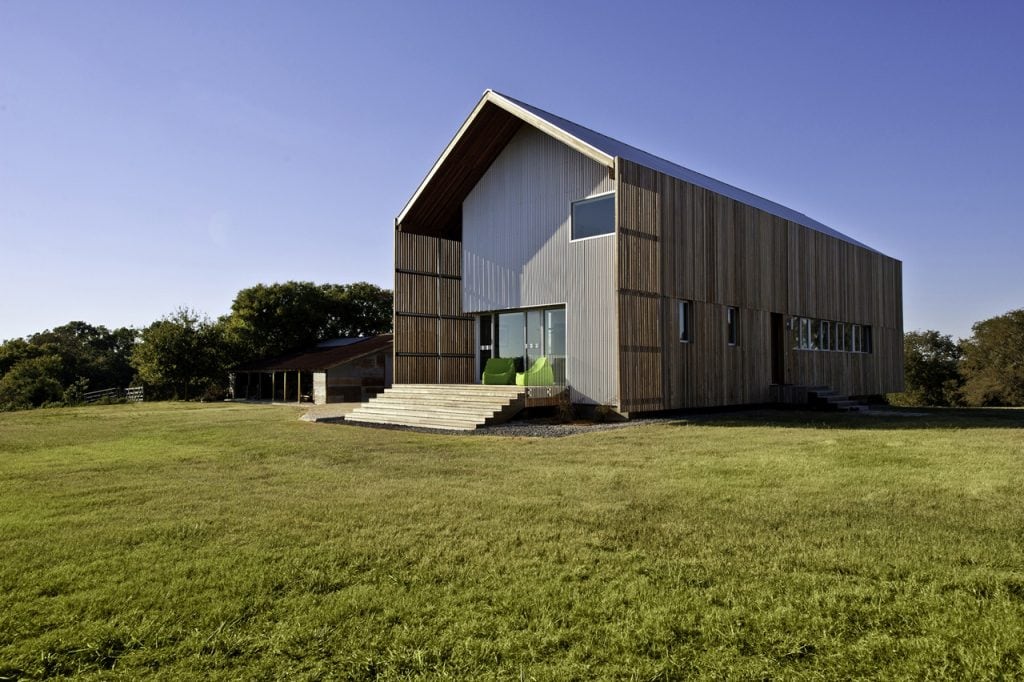
You’ve heard that barndominiums cost less than a stick-built home, but how much less? How much can you expect to spend on your own barndominium floor plan?
Costs – as you may have guessed – largely depend on:
- The size of the home
- Your location
- How much site work needs to be completed
- How difficult it will be to hook up utilities
Many of these costs are highly variable need on the option(s) selected, but we can estimate the cost of just the barndo itself.
According to data from HomeAdvisor, barndo costs, on average, $35-$48 per square foot to build. This figure assumes that the barndo is basic (nothing custom) just a shell with exterior walls as a metal building.
When compared to a stick-built home, the savings can be significant.
Building a stick-built home costs $160 to $275 per square foot, and the building process is much longer. Even modular homes are experiencing a rise in cost per square foot due to higher lumber costs.
The same floor plan for a modular home is over $40,000 more today due to lumber pushing the final cost higher. We’re not seeing steel building kits experiencing these same price increases, making barndo costs even more attractive.
Market conditions can change, but it’s cheaper to construct a barndo today due to the rising prices of wood and other materials.
Keep in mind that there will still be comparable costs for the following whether you choose a metal building kit or wood-frame home:
- Granite countertops – or any material
- Roofing
- Siding
- HVAC
- Sewer / septic
- Well
- Etc.
Interior options and materials will cost the same whether you’re opting for a metal or wood construction. House plans are not that different in terms of finishing out the interior.
Additional Costs to Consider
A barndominium has a lot of costs that often aren’t considered by the owner when building. You might find a kit for a barndominium with a low cost of $40,000, but this isn’t the only cost you need to consider.
Whether you build a barndominium or another house, you’ll need to consider the following costs before breaking ground on your barndominium:
- Land costs
- Foundation
- Clearing and grading
- Finish work
- Interior options
- Permits
- Inspection
- Removal of previous structure (if applicable)
If you’re like a lot of people who are following the barndominium trend, you may be living in a rural area far from town and utilities. Internet may or may not be available, and it may not be possible to have Internet run to your barndominium.
Electric, water, and sewer hook-up (if available) will also add to your overall barndominium cost. Do you have a road to your barndominium? If not, how much will it cost to rough in a road?
There is a lot to consider when building a barndominium, but these same costs exist with any home you build.
Simple Barndominium Kits For DIYers
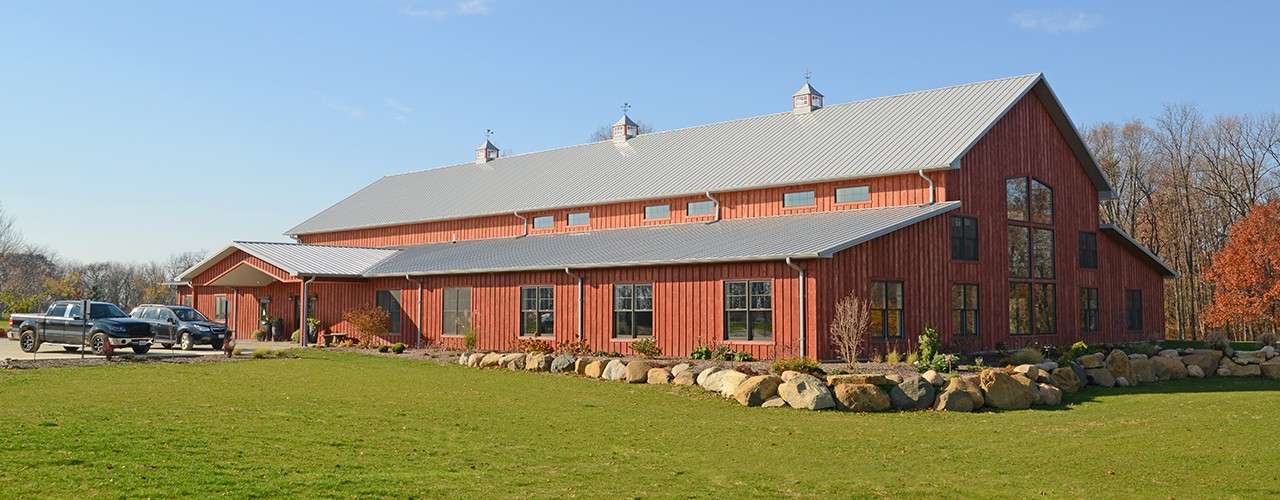
We’ve used the term “barndominium kit or metal building kit” quite a lot already, but what are barndominium kits?
Understanding Metal Barndominium Kits
A barndominium kit is exactly what it sounds like: a kit to put your metal building together. The components needed to complete the outer shell of the structure are included. Barndominium kits provide the “shell” of the steel building.
The components will be delivered to the job site so that you or your builder can erect the barndominium.
What’s Included in a DIY Kit?

Most metal building manufacturers offer kits to match your selected floor plan.
The kit for your floor plan may differ from another person’s because of customizations and some developers include and exclude different components.
With that said, most kits offer these basic staples.
You can be confident that the construction will be faster with a kit because your kit will include:
- Prime framing (metal or wood options)
- Secondary framing
- Flashing
- Trim
- Plans and drawings
- Fasteners
- Roofing material
- Wall sheeting
But depending on the barndominium floor plan that you create with the design company, there may be additional items included. Interior items are not included with barndominium kits. You may be able to have “additions” added to your kit, which is a popular choice.
A few of the additions may be:
- Insulation
- Windows
- Doors
- Gutters
What you can be confident about is that you’ll have all of the materials to erect the steel building shell. You can then continue the interior of the project with materials of your choice.
You can choose the same interior options of a traditional home while benefiting from the cost-effective design that a steel barn house offers.

